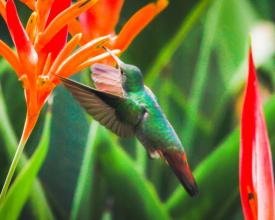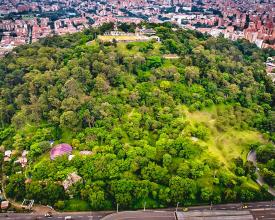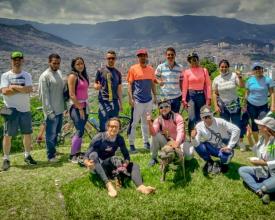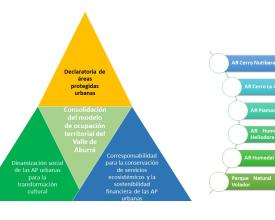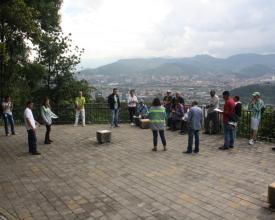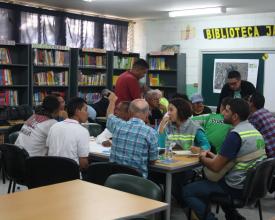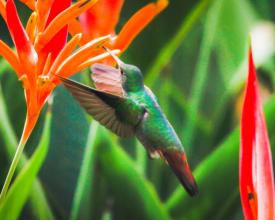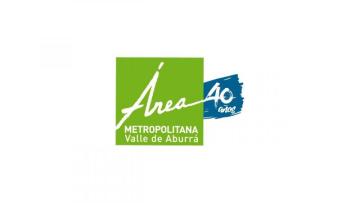
Urban protected areas in the Aburrá Valley, a promising management path for the social appropriation of biodiversity and its ecosystem services.
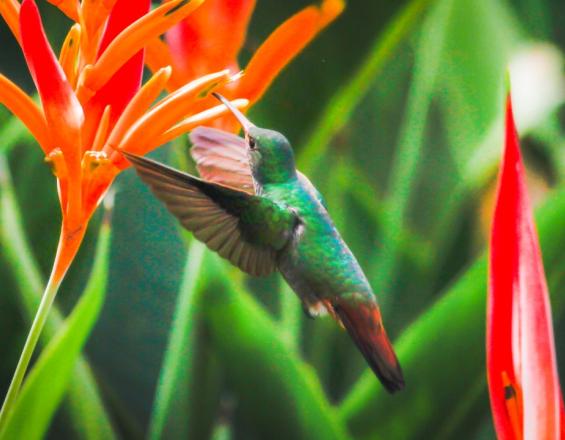
The Aburrá Valley is an inter-Andean landscape in which a city of 3.6 million inhabitants is located. Thanks to remarkable citizen participation processes, valuable technical efforts, and a stable political will, the urban environmental authority has declared 6 protected areas: Regional Natural Park (Cerro El Volador) and Recreation Areas (Nutibara, La Asomadera, Piamonte, El Trianón-La Heliodora, and Ditaires). The Aburrá Valley Metropolitan Area is already reaping the fruits of efforts to conserve biodiversity and ecosystem services, climate adaptation, and quality of life in a context with major challenges of air pollution, public space deficit, and public health. State action, citizen/business ownership, and knowledge management demonstrate that these areas are promising laboratories for cultural transformation and urban resilience in the face of climate change.
Context
Challenges addressed
1. Greater recognition of the National System of Protected Areas, concentrated for technical and economic reasons in wild areas (National Parks) with intense threats.
2. Evaluation of the effectiveness of management according to conservation objectives/objectives in accordance with the urban context.
3. Continuous offer of dynamic activities for regular visitors who are more committed to conservation.
4. Increase of institutional capacity (human/financial resources) for its administration and management.
5. Effective environmental and urban planning authority for better management/mitigation of threats and transformation pressures.
6. Articulation with municipalities. Joint/differentiated action for more robust management.
7. Landscape integration. Environments favorable to its conservation. Regulation of buffer zones.
8. Qualification of infrastructure (trails, ranches, signage) in areas with greater recreational capacity.
Location
Process
Summary of the process
The declaration of urban protected areas makes it possible to preserve areas of high ecological and social significance in a context of particularly dense interests and conflicts. PAs are an environmental determinant of land use planning and are a higher level rule in the municipalities' land use plans. However, their effective conservation transcends the legal sphere: without business contributions, public institutional articulation, and especially citizen pressure, it will not be possible to maintain and increase the ecosystem services they provide to the metropolitan society of the Aburrá Valley. Therefore, the recreational, educational, recreational, and research activities that have been developed for more than 11 years are the best guarantee of a cultural transformation based on the contributions of nature to the welfare of people. The sustainability of these areas depends on this for the benefit of a territory with a high deficit of public space and with problems of citizen coexistence and physical and mental health accentuated by air pollution, socio-spatial segregation, poverty conditions, and the effects of the current pandemic.
Building Blocks
Playful, pedagogical and communicative strategies for the social appropriation of protected areas.
The guarantee of conservation of urban protected areas, beyond the technical and legal exercise of declaring them, is a robust process of social involvement. To this end, it has been essential to develop actions and strategies to promote recreation and environmental education around protected areas, expanding a collective awareness of the importance of their conservation, not only for biodiversity but also for the quality of life in the city.
The appropriation of socio-ecological concepts becomes a key factor in achieving the conservation objectives of protected areas. To the extent that stakeholders are committed to and recognize the values and ecosystem services that these types of spaces provide for the sustainable development of cities, the permanence of these spaces over time is guaranteed in desirable conditions for the conservation of biodiversity and amenity, enjoyment, well-being, and physical and mental health for all.
Enabling factors
The continuity of social appropriation processes based on environmental education and public communication for biodiversity provide tools for the management and adequate co-management of protected areas, facilitating coordinated actions among all stakeholders: institutions, citizens, academics and the private sector.
Lesson learned
- The environmental education strategies and the dynamization through activities such as interpretive tours, yoga, weaving, bird watching, etc., allow for better learning, understanding and appropriation of the protected areas to the extent that another type of relationship is built between humans and nature and the search for a biocentric vision of life where interdependencies are recognized.
- Other educational-environmental tools are strengthened and provided, as well as other conservation actions that were being developed by citizens and other stakeholders prior to the declaration.
- The incorporation in the citizenship and the government of some concepts based on the dialogue of knowledge helps the conservation of ecosystems and biodiversity.
- Participatory action as a fundamental axis for the successful management of protected areas.
- Other actors and sectors are involved in the conservation strategy of protected areas, including universities and companies, which make contributions based on their specific interests and capacities.
Strategic relationship for the management of protected areas in the urban context
The relationship between stakeholders (institutional, citizen, academic, and private sector) allows the creation of administration and co-management mechanisms that respond to the needs of the protected area and the effective management within the framework of the execution of the Management Plans contributes to the environmental governance of the protected areas.
Enabling factors
- The optimization of resources and institutional capacities in the implementation of protected area management plans for their effective management.
- The definition of the roles and competencies of the different stakeholders with respect to the protected areas allows for greater clarity in terms of the instances of action and participation in their management, control and monitoring.
- It strengthens citizen participation and governmental, community and private inter-institutional alliances.
Lesson learned
- Recognition of the actions, knowledge and initiatives of citizens regarding the conservation and protection of these strategic spaces for the maintenance of biodiversity and the preservation of ecosystem services.
- Co-management promotes inter-institutional dialogue and the exchange of knowledge to develop a joint construction of the protected areas, which allows for the strengthening of trust among the stakeholders, reaching levels of good governance.
- The contribution of private enterprise contributes to the sustainability of urban protected areas, while at the same time it is potentially functional to the private sector's environmental responsibility actions.
Protected areas as environmental determinants in land use planning.
Protected areas in the urban context become an environmental determinant of land use planning and management, which, as higher-ranking norms, shield these spaces from changes that may be considered in relation to land uses other than the conservation and preservation of biodiversity and depend on political will for their management.
Enabling factors
- They provide guidance to municipal administrations on land use within protected areas, guaranteeing green spaces that help adapt to and mitigate the effects of climate change and respond to the challenges of resilient, sustainable and biodiverse cities.
- Reduce the occurrence of socio-environmental conflicts around strategic ecosystems in urban areas.
- They favor the fulfillment of the Sustainable Development Goals and the IAHSI targets of the Strategic Plan of the Convention on Biological Diversity.
Lesson learned
The fact that protected areas are environmental determinants of land use planning is the clearest possibility that exists to avoid the alteration, degradation, or disappearance of strategic ecosystems in the urban context, favoring the collective right to a healthy environment, as these cannot be ignored by municipal administrations or by the political will of the moment.
However, it is not enough to incorporate them into the planning tools to position the designation, regulation and administration in order to achieve specific conservation objectives in public policies and to ensure that there is an effective commitment to them. Interinstitutional coordination and articulation are necessary to achieve effective management of protected areas in a scenario particularly dense in conflicts and interests such as the urban landscape.
Impacts
The declaration of these areas represents an important step towards the significant attenuation of threats and the definitive protection of green spaces of high ecological and social value in the midst of a densely urbanized matrix. This has increased knowledge of the region's urban biodiversity, as well as the recognition and valuation of ecosystem services such as microclimatic regulation, capture of particulate matter, water regulation, and the cognitive, cultural and spiritual benefits associated with biodiversity, among others. All of them are part of the region's landscape heritage and one of them has also been declared a National Asset of Cultural Interest (El Volador) for its historical and archeological values, constituting a mixed heritage (natural and cultural).
These have generated a scenario for strengthening environmental governance through recreational, recreational, educational and research activities (including doctoral theses), as well as public communication and decision making.
They have also strengthened the urban ecological network, of which they are structuring nodes, and the Metropolitan System of Protected Areas, making them an environmental determinant and a higher hierarchy norm in the land-use planning processes developed by local administrations.
Beneficiaries
Approximately 3.5 million people from the Aburrá Valley metropolitan region, made up of ten municipalities (Caldas, La Estrella, Sabaneta, Envigado, Itagüí, Medellín, Bello, Copacabana, Girardota and Barbosa). National/International Visitors
Sustainable Development Goals
Story
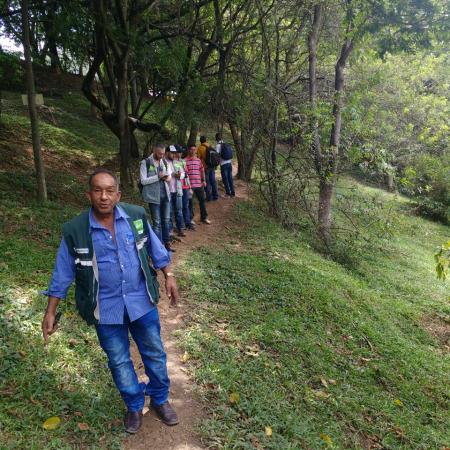
The germplasm bank of the Cerro La Asomadera Recreation Area[1] [1] Some elements of this story were taken from the chronicle "El cerro que asoma a otros cerros".
[1] Some elements of this story were taken from the chronicle "El cerro que asoma a otros cerros". Retrieved from https://www.periferiaprensa.com/index.php/component/k2/item/2537-el-cerro-que-asoma-a-otros-cerros
According to the stories of its inhabitants, the name of La Asomadera was given because the people came to look out, to say goodbye to their visitors. It was an obligatory route to Medellín, travelers or muleteers arriving from the south of the Aburrá Valley had to cross the place. From there you could see the entire valley, a place covered with reed beds and dangerous ravines in the shade of the guava trees. Over time it was filled with houses. Then it became a garbage dump. Finally, thanks to the efforts of citizens like Don Herman and Don Hernando, this place became a reserve full of a variety of flora and fauna. An arboretum as important as the city's official Botanical Garden. The dump was turned into a paradise. They removed debris and garbage, organized trails and planted trees everywhere. Citizens from nearby neighborhoods, environmental organizations and educational institutions participated in this process. After almost 32 years when the planting began, and with the declaration in 2011 as a protected area, this became an important place that articulates different actors that mobilize actions around its conservation. Currently there are more than 411 species of native Colombian flora and 81 species of birds. In addition to having a nursery converted into a germplasm bank for the conservation of native species of the national and regional territory in a total of 26.6 hectares. With the activities of dynamization the actors that converge in this place, already know, for example, what is an opossum and why conserve them (in addition to their natural right to exist! This protected area and the other areas that make up the Metropolitan System of Protected Areas are a socio-ecological laboratory where yoga classes, vegetable garden planting, waste management, bird watching and biodiversity are taught. A space for collective mobilization for conservation, the construction of environmental citizenship and the generation of awareness among citizens, businessmen, the public sector and academia.
